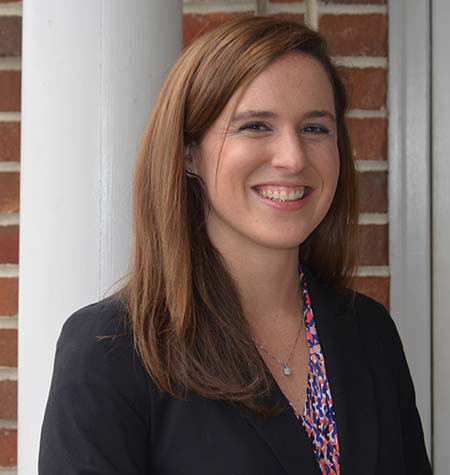
Donor data is the means to identifying top prospects for your organization.
Not only is it vital for better understanding your donors, but it’s also a no-brainer when it comes to communicating with and marketing to your supporter base.
Donor data is the fact-based information that you can analyze to identify promising donor prospects and receive more donations for your organization.
Before you can use donor data to your advantage, though, you need to understand how to identify the most important data. Doing so can be a challenge, especially if your organization has a large donor database or if you’re unsure where to start.
To help your organization, we’ll cover the top proven strategies for uncovering key donor data:
- Clarify your goals.
- Understand your key data.
- Know your tools.
Please stay tuned for three more strategies in Part 2 of this series!
To craft an effective donor data strategy, you can get started with the first step.
1. Clarify your goals.
Before you can begin uncovering the donor data that will most help your organization, you need to determine what kinds of donors you’re seeking.
Different donor groups will possess different traits, patterns, and indicators. Knowing which campaign or program you’d like to fund can help you target your most promising donors.
If, for example, you’re looking to identify likely prospects for your planned giving program, you’ll need to focus on indicators relevant to planned giving. In this case, age can be a key factor in revealing planned giving prospects and would need to be taken into consideration during your data analysis.
In contrast, if you’re trying to build your mid-level donor base, then you’re better off focusing your data acquisition efforts on event attendees or lower-level donors with more giving potential, for example.
Once you’ve clarified your goals, then you can better target the donors who are most likely to fulfill them.
This tip is especially useful for large organizations with overwhelming amounts of data. Focusing on promising donor groups can help you direct your time, resources, and money most efficiently.
In summary: Defining your goals can help you better understand what kind of donor data you’ll need to look for.
2. Understand your key data.
To uncover key donor data, you first need to know what to look for.
Donors are complex people, but there are certain telltale signs and patterns that you can use to help you identify prospects.
Your most important data can be broken out into two identifiers:
- Wealth Indicators
- Philanthropic Indicators
Wealth indicators point to a prospect’s ability to give. You can estimate a donor’s giving capacity by analyzing factors such as:
- Real estate ownership
- Business affiliations
- Political giving
- SEC transactions
All of this information is valuable for gaining a picture of your donors’ financial abilities, but it’s only part of the data you’ll need uncover.
Philanthropic identifiers signify a prospect’s willingness to give. Even if a prospect is wealthy, that doesn’t mean that they’d want to donate to your organization.
That’s why it’s important to consider wealth indicators in tandem with these important philanthropic indicators:
- Previous donations to your nonprofit
- Previous donations to other nonprofits
- Philanthropic involvement
- Personal information and interests
Both wealth and philanthropic data help you anticipate which prospects are likely to donate and how much you can reasonably expect to receive. With this donor data, you can get a clearer picture of who your donors are as people and as potential contributors to your organization.
All of this information should be tracked in your chosen fundraising software and prospect profiles. You may find that you have gaps in your donor data. To gather the information that you need, you learn about helpful tools in the next section.
In summary: Both wealth and philanthropic data will be important for understanding your donor base, so use them in conjunction.
3. Know your tools.
The best way to gain insight into your donors is by performing prospect research.
Prospect research is the comprehensive means of seeking out key donor data to both identify prospects and learn more about their backgrounds.
A variety of tools can be used to help you perform prospect research and seek out the important data that we’ve discussed.
To get started, you can use these tools to learn more about your donors:
- SEC.gov reveals corporate filings and stock ownership.
- FEC.gov gives free access to data that encompasses political contributions.
- Zillow can help you estimate the value of a prospect’s real estate holdings. All you need is the address!
- ZoomInfo helps you identify B2B (business-to-business) data, which can help you track your donor’s business affiliations.
- DonorSearch offers a large charitable giving database as well as a free search tool for condensed philanthropic data.
- AlumniFinder can help you identify lost alumni and donors for your organization.
- Social media such as Facebook, LinkedIn, and even Google can reveal public personal and professional information about prospects.
These are just a few of the valuable tools that can help you understand more about your donors.
After all, once you’ve used these tools to uncover key donor data, you’ll still need to reach your donors in the most effective way.
Qgiv’s Stewardship and Cultivation guide can help you make use of this valuable donor data to build stronger donor relationships.
But before you can act on the data that you acquire, you’ll need to set yourself up for success by preparing your donor database.
In summary: There are plenty of free, online tools that can help you uncover donor data that’s missing in your prospect profiles; use these tools to your advantage!

